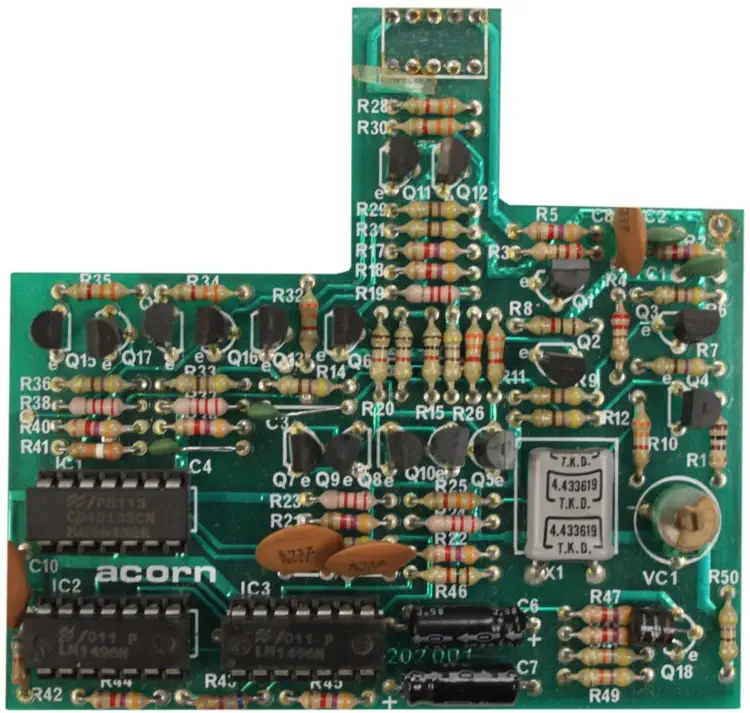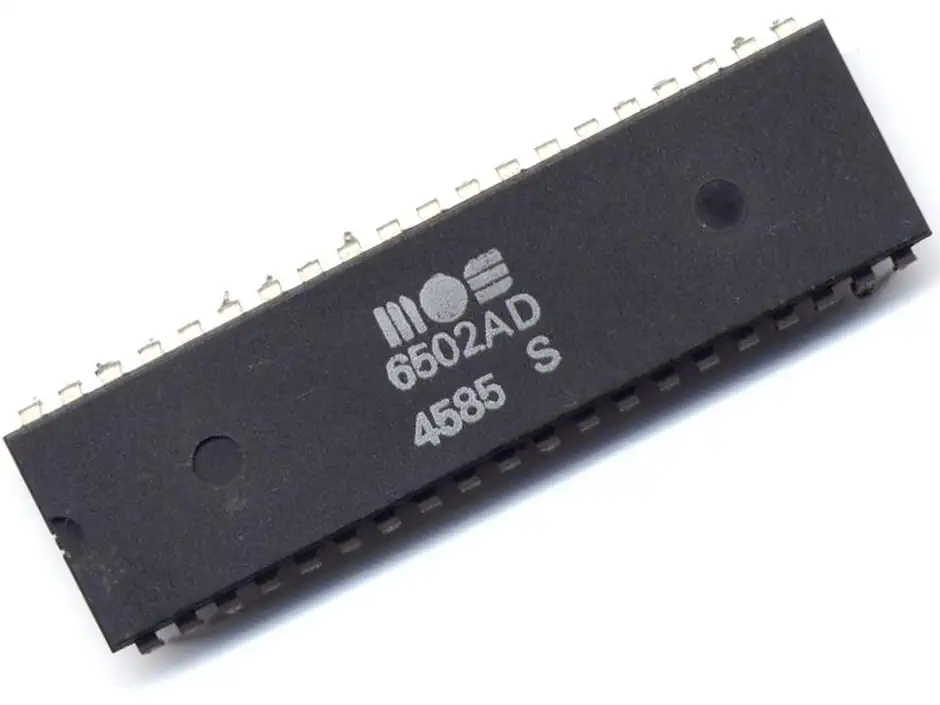The Acorn Atom
The Acorn Atom was released in 1980 by Acorn Computers Ltd., and is the predecessor of the BBC Micro.
The computer was sold both as a kit or as a ready-assembled system. The main advantage over other systems of the time, was that the Acorn Atom had a high resolution graphics mode of 256x192 pixels, which was high for the cost of the system.
The Atom was based on the MOS Technology 6502 CPU and came with 2KByte of RAM that was expandable to 12K. With 2kByte of RAM, only 512 bytes were available for programs. 512 bytes were needed for Video RAM, and the other 1KByte was needed for the special Block Zero RAM that the 6502 architecture uses like other processors use registers, stack and other CPU variables.
If you wanted to use the high resolution graphcis, A video RAM expansion was needed. The screen memory could be upgraded to 6KByte. The machine featured an MC6847 Video Display Generator that allowed for text and graphics modes. The machine could be hooked up to a Television set or a monitor. The MC6847 was only capable of producing a 60Hz signal, which was incompatible with the European 50Hz PAL TV norm, and initially this prevented the machine from being used on many european TVs. Later Acorn produced a 50Hz PAL color card to fix this issue. (See below).
The Atom had an MC6847 Video Display Generator (VDG) video chip, allowing for both text and graphics modes. It could be connected to a TV or modified to output to a video monitor. Six video modes were available, with resolutions from 64x64 in 4 colours, up to 256x192 in monochrome. At the time, 256x192 was considered to be high resolution.
The built in BASIC version also had an assembler integrated into it, which allowed the programmer to freely use 6502 assembler in BASIC. The Atom's BASIC was developed by Sophie Wilson, and was not easy to use due to the oddities that it used compared to other popular BASIC versions. In 1982 Acorn released an upgrade board that allowed users to use the more advanced BBC Basic, that was developed for the BBC Micro.


Acorn Atom Color Board peripheral
The Acorn Atom Color Encoder board was designed to enable the use of the Acorn Atom computer on PAL television sets. It was sold as a peripheral but a version of the Atom was also sold with the board pre-installed. The board included:
- A 60-50 Hz converter
- RGB and Sync outputs
- Color encoded signal for the Atom's onboard modulator
- Red, Green, Blue, Yellow
- Yellow(Buff), Cyan, Magenta, Orange


MOS 6502 CPU
The 6502 is an 8-bit MicroProcessor designed by MOS Technology. The team was led by Chuck Peddle and had also worked on the Motorola 6800. The 6502 is a simplified, but faster and cheaper design than the 6800.
The 6502 was introduced in 1975 and was the cheapest microprocessor on the market. Together with the Zilog Z80, the 6502 helped start the home computer revolution of the 1980s. The 6502 was used in a wide range of devices: the Atari 2600, the 8-bit Atari home computers, the Apple II, the Nintendo Entertainment System, the Commodore 64, the BBC Micro and many others. All used the 6502 or a variation of it.
The 6502 is a 1MHz design, while the 6502A is designed for 2MHz. The 6502A is 100% compatible with the original 6502.
Commodore soon bought MOS Technology, but conitnued to sell the microprocessor to competitors and licensed the design to other manufacturers.
Source: WikiPedia - MOS Technology 6502
RAM max: 12kB
VRAM: 512B Sound Chip none Sound 1 channel internal speaker Display Chip none Display 64x64, 4 color
128x96, mono
64x192, 2 color
128x192, 2 color
256x192, mono Best Color 4 colors Best Graphics 256x192 monochrome (with VRAM expansion) Sprites none System OS BASIC Storage External Tape Original Price £120


